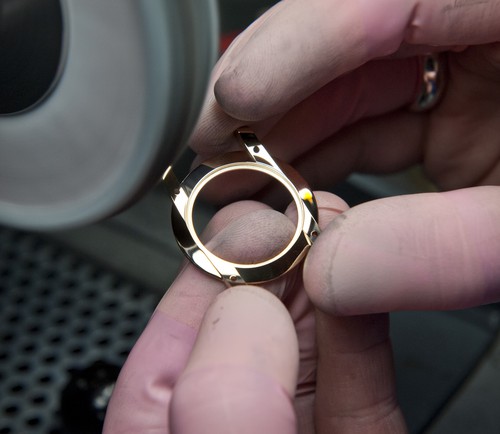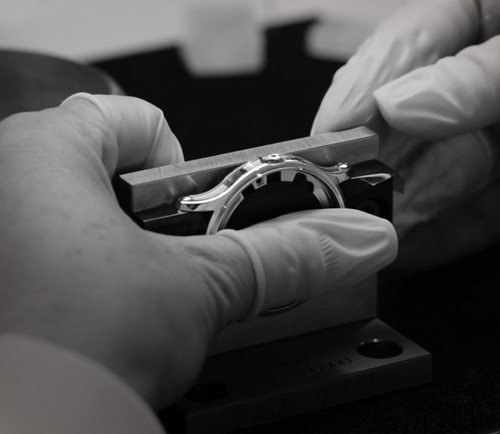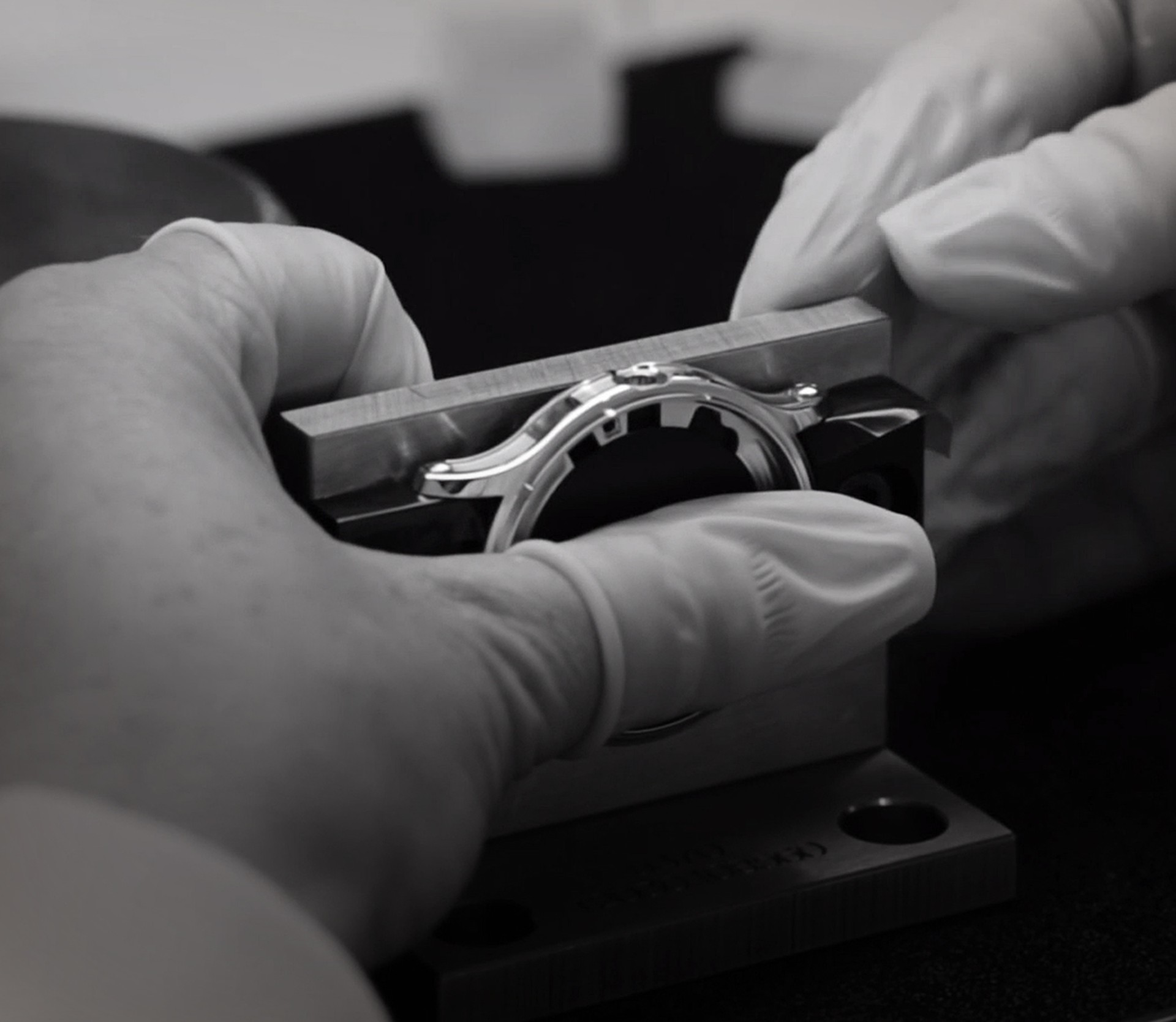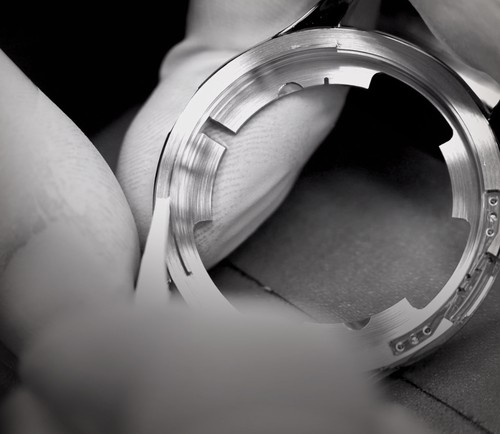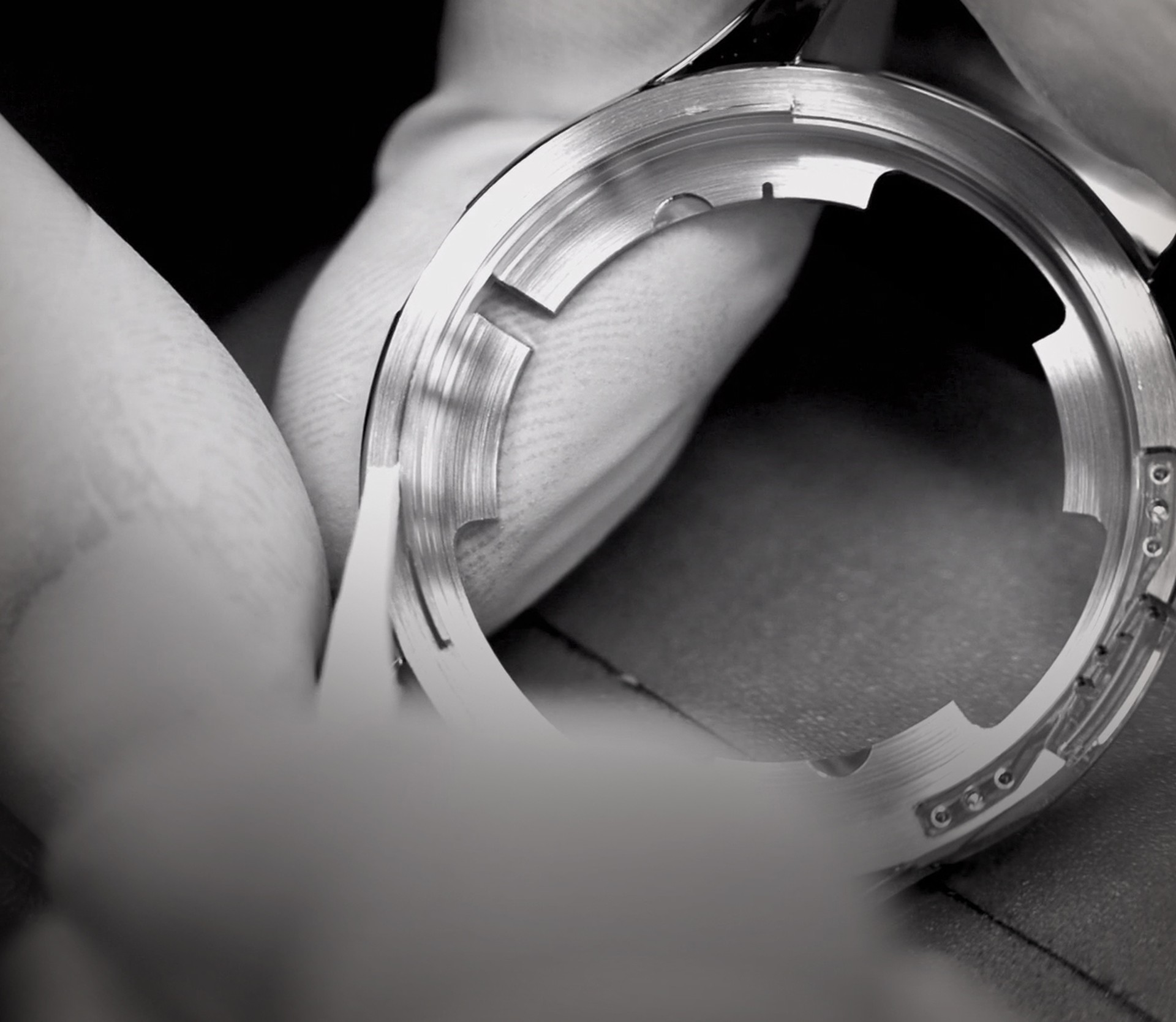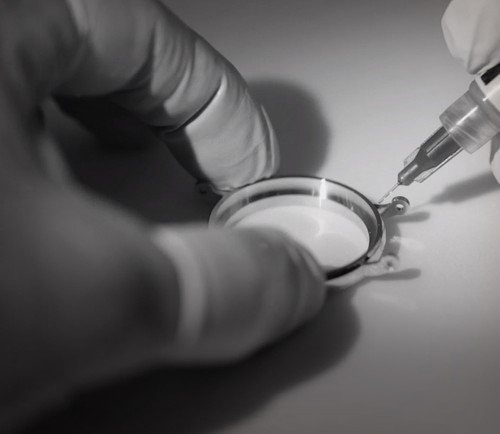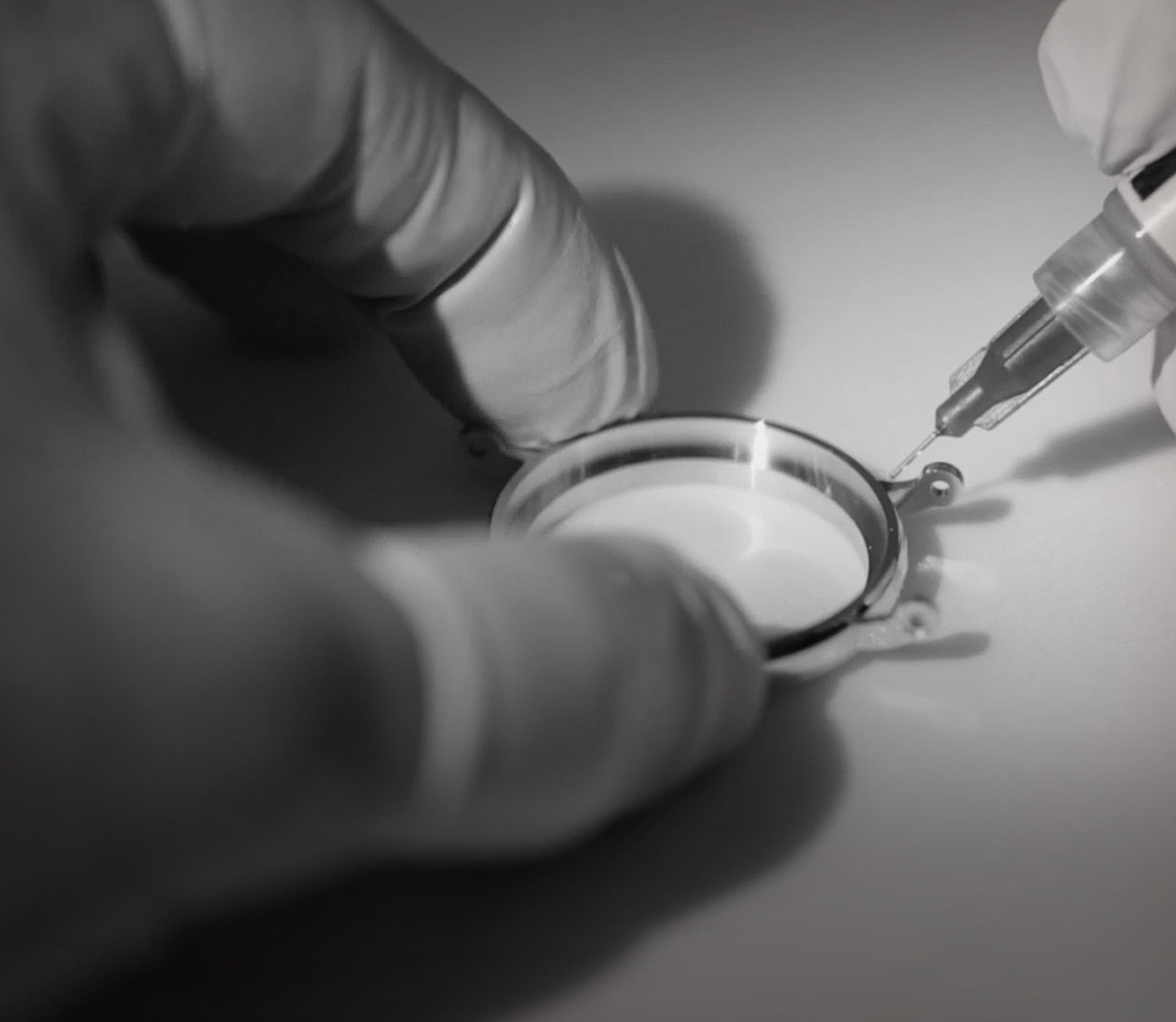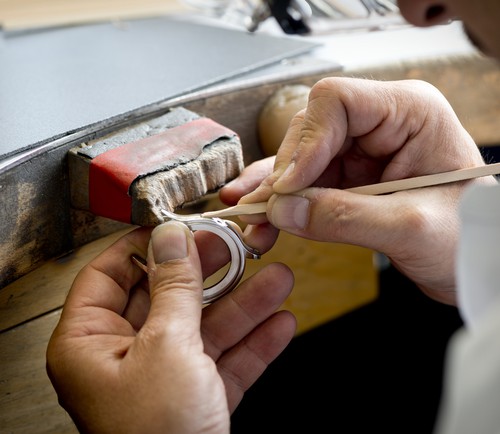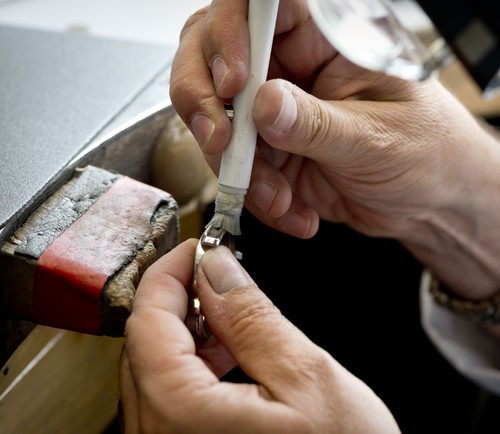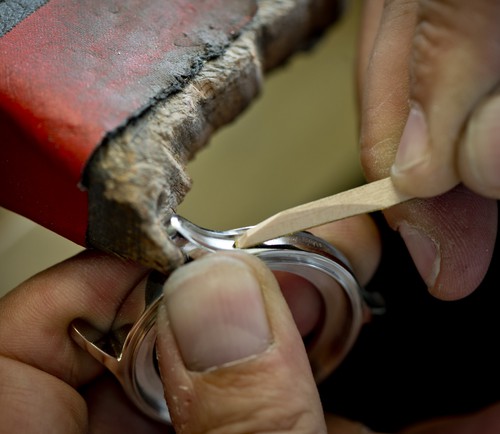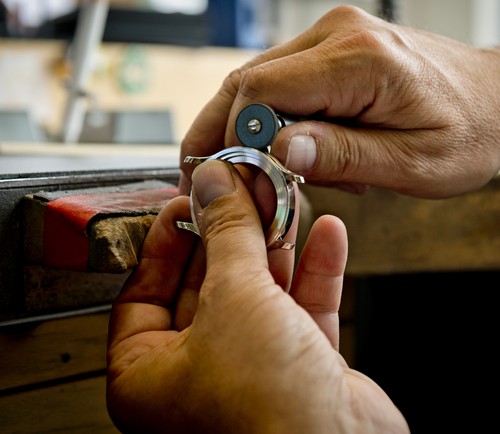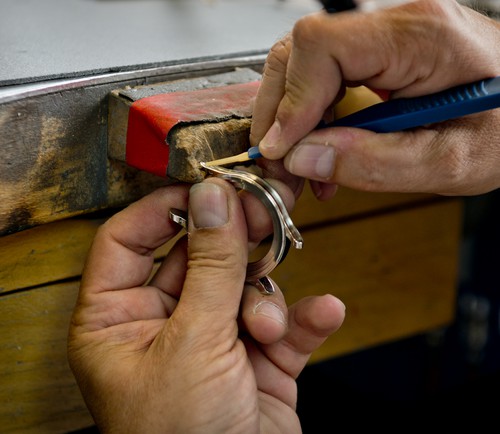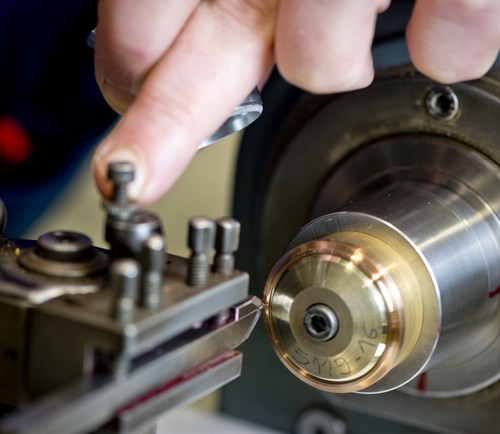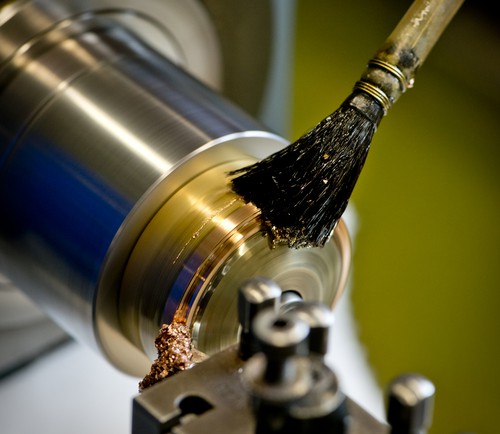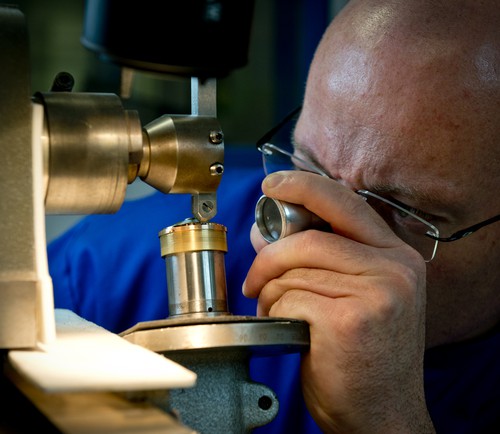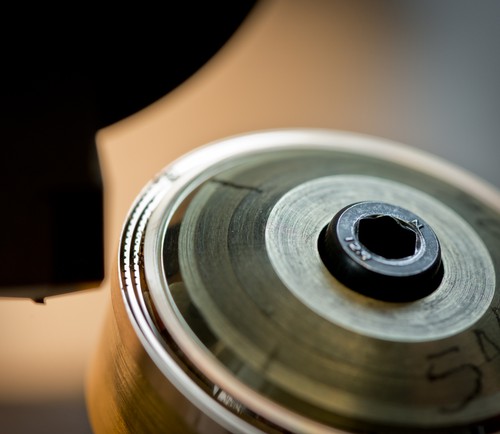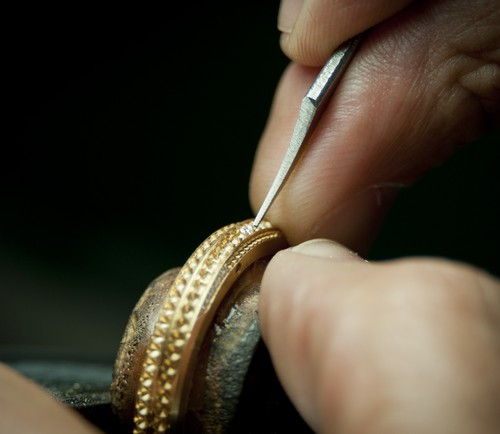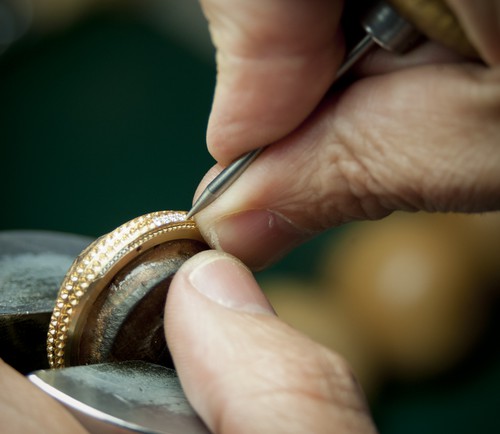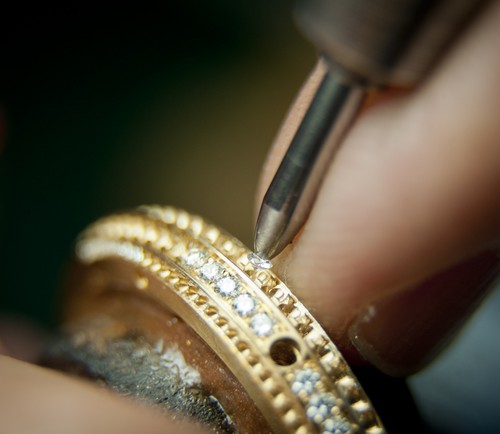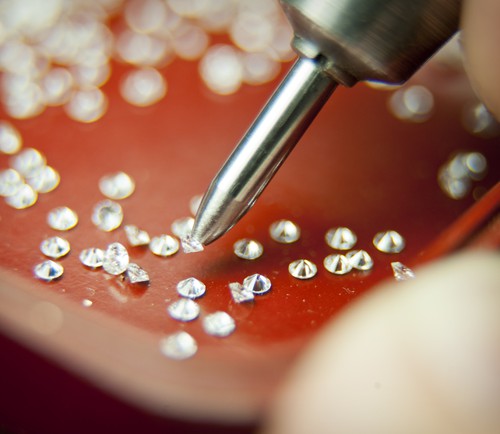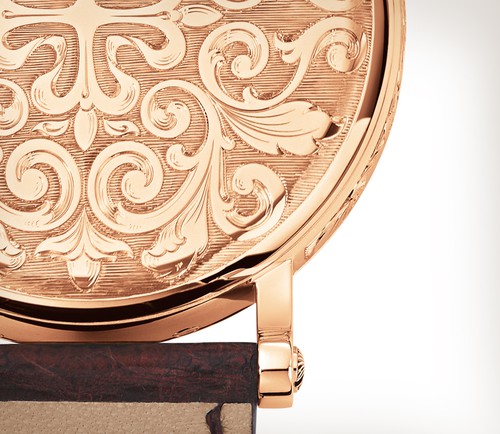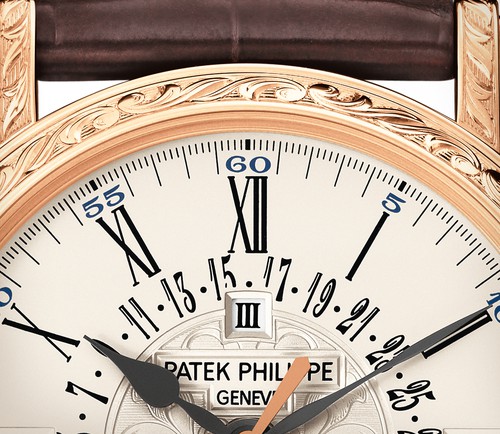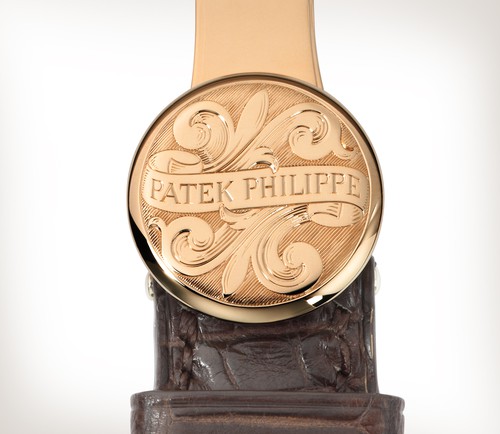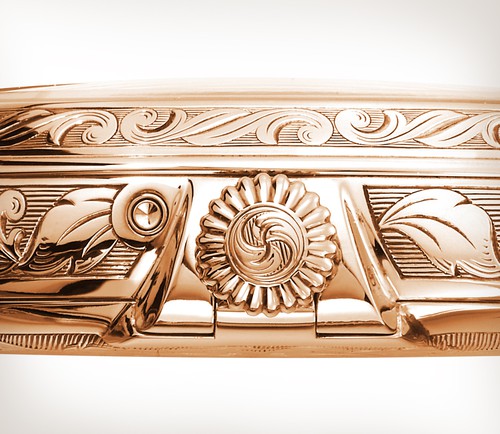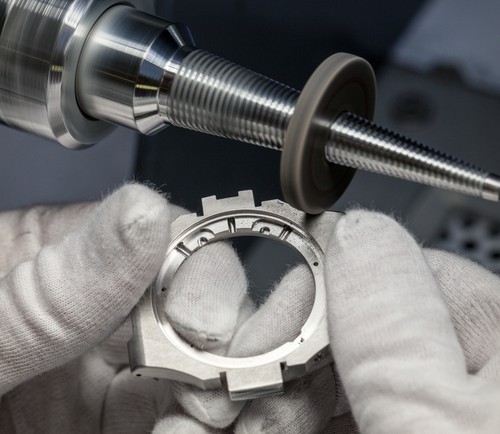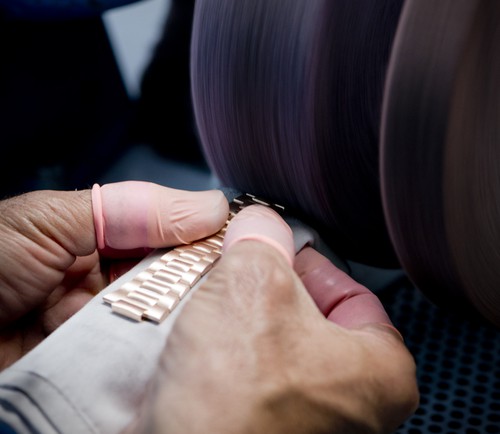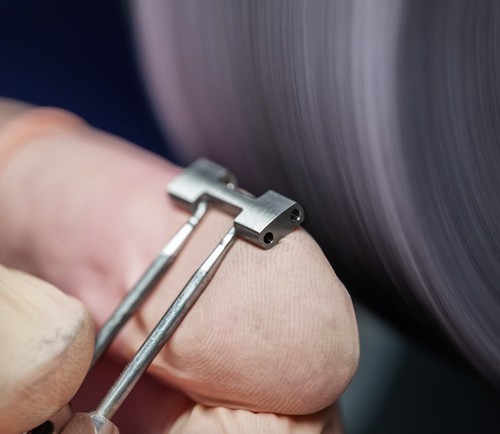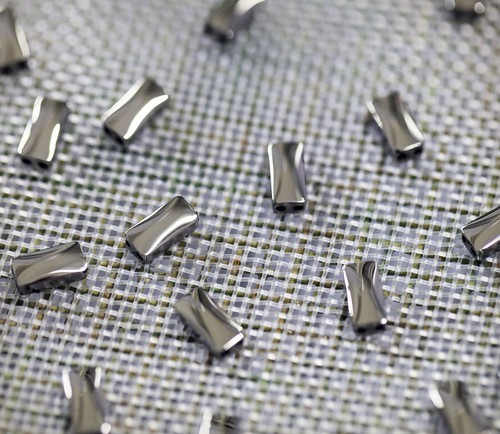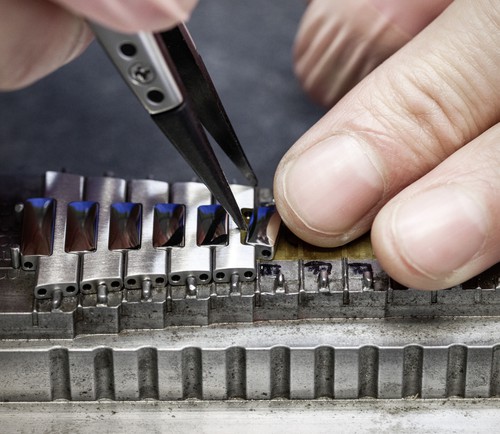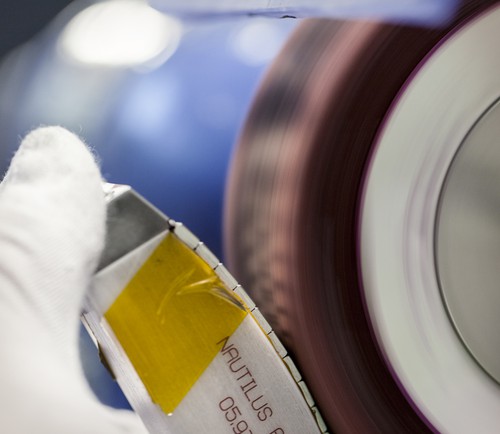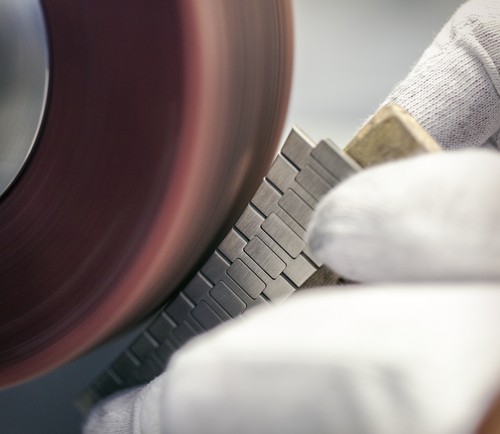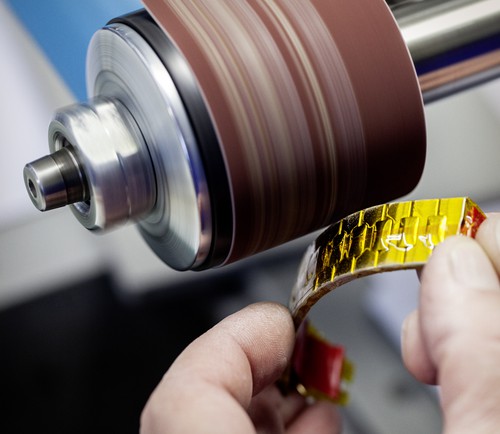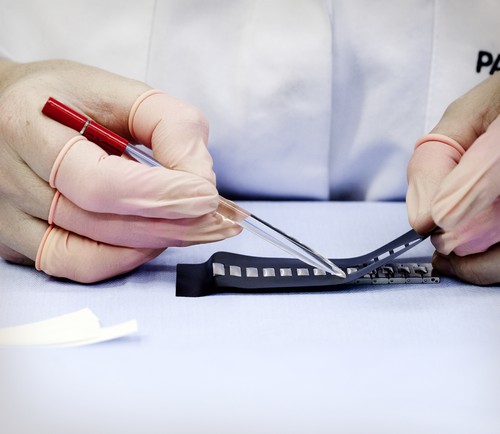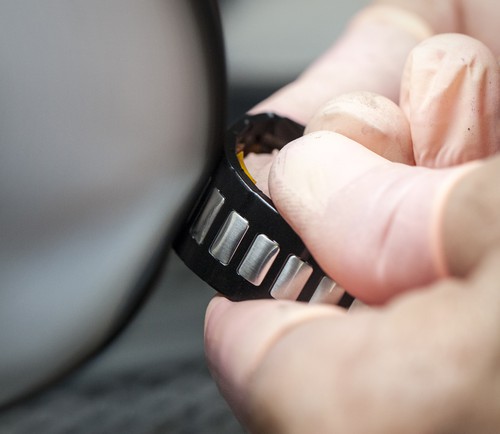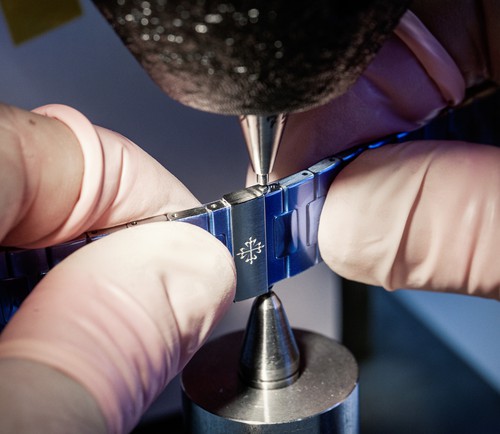2 - Cases and bracelets
Finishing the case and bracelet that will hold a watch is extremely intricate work requiring a multitude of complex procedures, and is just as important to Patek Philippe as the creation of the movement itself.
Making the body that will hold a watch, and crafting the bracelet that will keep it in place, are as important at Patek Philippe as the movement itself. Crafting a case is extremely intricate work requiring the work of about 20 specialists performing around 50 operations. Creating a metal bracelet also requires a multitude of complex processes.
The exterior of a timepiece must reflect the excellence of the movement inside. They must be perfectly functional and ensure the ultimate in comfort and convenience. This is why the Patek Philippe Seal places such great importance upon elegant forms, noble materials, and the perfection of finishes and decorative techniques.
First, the form of the case is created using a press. The rough shape of a part is cut from a strip of metal, then a metal punch is used to push the piece into an anvil-like die (a metal block of mold shapes), where it is forged to subtly refine its dimensions. Repeated careful pressing gradually achieves the definitive shape of the case. The case component is then refined by one of Patek’s state-of-the-art fleet of machines; at the same time, its series number is engraved inside the caseback.
The case is then hand-finished – a process called “fine working.” Any metal residue is filed away, attachments are soldered, hinges are made for cases with dust covers, and openings are adjusted for smooth fit. Preparations are made for polishing.
The rigors of the Patek Philippe Seal mean that under no circumstances will traces resulting from manufacturing process deviations be tolerated.
Guilloché, also called “engine turning,” is a technique used to produce a sheen of minute geometric patterns of intersecting lines, often made on pocket watch dust covers. At Patek Philippe, hand-guilloché is carried out on lathes, many of which are antique, hand-operated machines with their own character, which have been adapted over generations to give even more sensitive expression to the work they do. By turning two crank handles, the operator guides the cutting tool so that it carves delicate grooves into a metal surface.
The famous Patek Philippe Calatrava Clous de Paris model features on its bezel a hobnail guilloché motif – hollowed lines that intersect to form tiny pyramids. This technique can be seen on the men’s Calatrava Ref. 5119 or ladies’ Ref. 7119.
Decorative guilloché crafts are more often used on ornate casebacks and rare handcraft models.
Any gem chosen for use in a Patek Philippe case or bracelet – diamond, ruby, sapphire, emerald – will be the very finest of its kind, and comply with the Patek Philippe Seal’s strict criteria. At Patek Philippe, only the top D to G color range is used. The clarity of the diamonds is always of the desirable internally flawless grade (known as IF), and exhibits an immaculate cut. The precision of the cut is also vital in ensuring a regular and even setting. The task of the gemsetter is to place it perfectly, so that it shows to exquisite advantage and is of course secure. Patek Philippe gems are set in the time-honored way – by hand, never bonded with adhesive. The setter positions each precious stone in its mount, either in a bezel-setting where the gem is set by carefully folding in the metal collar (usually gold) that surrounds it, or in an invisible setting, where the gem has a groove on the underside that fits onto a hidden grid of rails. Gems must be placed level, pointing in the same direction and all at the same height, while ensuring an ultra-safe hold. Precision and regard for the shape and character of the gem is vital to bring out its beauty and achieve the brightest radiance and luster.
Engraving can be featured on a multitude of surfaces on a watch, from the dial to the movement components; bespoke engraving is most often seen on a case. It’s a time-consuming process – it can take more than a week to decorate just one case in this way.
Engraving creates shining, swooping lines and a play of light and shadows, inspired art inscribed on a tiny, resistant metal canvas. In addition to artistic flair, it requires infinite dexterity to accomplish.
Before any engraving can begin, the artist uses a pencil to sketch his subject and all the complex motifs in its pattern. Once satisfied with the design, the artist takes up a burin (the engraver’s slender chisel to make a fine line) or graver (for broad furrows). This tool can be pointed, squared off or rounded, but it’s always sharp. It penetrates the material, tracing a line or a curve with furrows of varying depth. And so the engraver transfers his detailed guiding lines to the waiting surface. As in the jewelry world, he uses a binocular microscope, together with absolute concentration. The burin, almost a paintbrush, is held in one hand while the other moves the engraver’s ball, a spherical stand that rotates the piece for the best working position.
The three engraving techniques:
- Line-engraving or intaglio: fine lines made with a burin
- Relief, also called “pounced ornament”: a trompe l’oeil style of modeling in the manner of bas-relief, created using a graver, where background material is removed to leave a raised, lighter-looking area
- Champlevé: refers to a hollow, made with a flat graver, in the surface of a metal plate to receive enamel
The humble art of polishing is one of the most important finishing techniques. It accentuates the case shape, highlighting each distinct part and visually bringing together gemsetting, guilloché work, and engraving into a shining, unified whole.
Polishing at Patek Philippe is done by hand, as it always has been, and is called “free floating,” or “float polishing.” This ultrafine technique is done without pressure, and is particularly difficult, but it produces a super-smooth, damage-free surface. The polisher uses a series of different-sized disks of fabric, felt, or hair (real or synthetic), depending on the desired effect, each coated in a gently abrasive paste. Polishing is careful, time-intensive work. A gold case, for example, would take on average an hour and a half to polish, a bracelet up to two hours, and a fine platinum case four hours.
Regardless of the intensity of the deburring and polishing operations, the form and aspect of all parts, movement and exterior elements must be preserved, in compliance with the Patek Philippe Seal.
Styles of polishing include:
- Mirror polish: imparts an unusual dual effect of steely reflectiveness or deep matt black, depending on the play of light
- Smooth satin brushing: a grinding head fitted on a tiny motor and coated in fine emery paste produces a slightly frosted effect
- Circular satin brushing: produces a velvety, tunnel-like illusion, achieved using a hand lathe or emery paper
- Lapping/emerizing: lapping involves a cast iron hand-lapping plate, spread or “charged” with a slurry of sanding abrasive in an oil or water base. The piece is rubbed against the plate in a figure-of-eight pattern, giving it a softened finish. Emerizing is achieved with a dry abrasive strip such as sandpaper
- Felt polishing: a thick-edged wheel of dense felt coated with a slurry of a polishing compound can be used for everything from metals to glass and precious stones to refine the polished or satinated surfaces of metal parts
Once polishing is complete, just touching a watch with bare hands, however clean, can damage the polisher’s work, causing minute scuffs invisible to anyone but a specialist using a loupe. For this reason, cotton gloves or protective rubber thimbles are worn in the manufacture workshops. When the case and bracelet leave the polisher for quality control, they’re also coated with a protective varnish called “blue.” This safeguards the watch during its onward journey, until the blue is removed for the watch to go to delivery.
There are different types of bracelet: chain bracelets and the mechanically made bracelet. With the traditional chain bracelets each link used to be individually handmade, positioned, aligned, assembled, and soldered, which meant that completing a bracelet was a complicated process. These days the links of modern mechanical bracelets are produced by machine; however, assembly and finishing is always by hand, and it remains an intensive and satisfying job.
A finished example: The Nautilus
The Nautilus, introduced by Patek Philippe in 1976 as a timepiece of muscular design and dauntless, charismatic personality, is not just a unique watch; it’s also perfect for the purpose of illustrating case and bracelet hand-finishing – and in particular, polishing techniques. The polishing alone includes machine sandblasting, lapping/emerizing, felt polishing, satin brushing, and polishing and buffing.
After machining, it takes around 55 different hand-finishing operations to complete the Nautilus case and bracelet. It begins with preparing the exterior links one by one: emerizing on the underside and satin brushing on top. Then preparing the center links one by one: emerizing on the underside, mirror polishing on top. Next is the assembly of the bracelet: fitting the links together and driving in the pins.
Chamfering, which means cutting away sharp edges, is then performed on the underside and top of the bracelet. The underside and top are then satin brushed for a uniform surface. Next is masking - protecting the surrounding area ahead of the next operation with lacquer or tape, and attaching perforated masking tape along the top of the bracelet. Then the center links and chamfer work are polished and buffed. Next, the clasp is assembled, adjusted for tension, fitted to the bracelet, and the cover riveted (on a triple-blade clasp). A final inspection follows this.
You might like to compare the tough, understated Nautilus with the equally rugged men’s Ref. 5960/1A, with its cool sheen of gleaming steel, and its bracelet of pronounced, articulated rows and “drop’’ link design. The professionalism of that finish is what gives it its fluid, cosseting feel against the skin, and provides each link’s separate interaction with the light it catches. It’s another example of the attention to detail that’s a hallmark of the Patek Philippe workshops and, in this case, their devotion to the craft of the perfectly finished bracelet.
